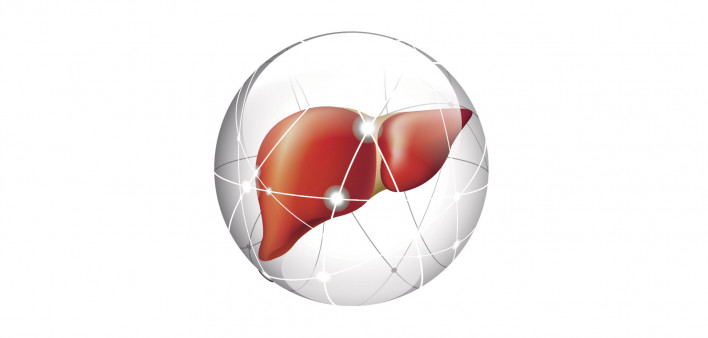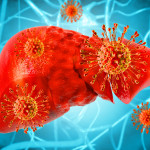After rising for more than a decade, new cases of liver cancer began to decline among people with hepatitis C in New York City after the advent of effective antiviral treatment, according to study findings presented at IDWeek 2023. While more people were diagnosed at early stages, improvements in screening and surveillance are still needed.
Over years or decades, chronic hepatitis B virus (HBV) or hepatitis C virus (HCV), fatty liver disease, heavy alcohol consumption and other causes of liver injury can lead to serious complications, including liver fibrosis, cirrhosis and hepatocellular carcinoma (HCC), the most common type of primary liver cancer.
First approved in late 2013, direct-acting antivirals can cure hepatitis C in more than 90% of patients. Curing hep C halts disease progression and may even reverse some liver damage, but people who already have cirrhosis when they start treatment remain at risk for liver cancer. Therefore, screening for HCV is important so that it can be diagnosed and treated before disease progression occurs. In addition, regular HCC monitoring is recommended for people with hepatitis C and cirrhosis and for certain people with hepatitis B to catch liver cancer at an earlier, more treatable stage.
Ned Latham, MBBS, MPH, and colleagues with the New York City Department of Health and Mental Hygiene and the New York State Department of Health analyzed recent trends in viral hepatitis and hepatocellular carcinoma in New York City. An estimated 243,000 city residents are living with chronic hepatitis B and 86,000 have chronic hepatitis C, representing about 3% and 1% of the population, respectively.
The researchers generated a retrospective cohort of NYC residents with HCC by matching New York State Cancer Registry data with NYC health department viral hepatitis surveillance data. They included all HCC cases diagnosed between 2001 and 2018, except those reported solely by Veterans Affairs hospitals or state cancer registries.
During this period, 13,209 NYC residents were diagnosed with HCC. Of these, 5,379 (41%) had hepatitis C; 2,456 (19%) had hepatitis B; and 282 (2%) had HBV and HCV coinfection. Altogether, just over 60% of people with HCC had viral hepatitis. Men accounted for 75% of all cases, and the median age at diagnosis was 63. Overall, 30% of cases occurred among Latinos (who are more prone to fatty liver disease), 27% among white people, 23% among Black people and 20% among Asians and Pacific Islanders. White, Black and Latino people were more likely to have hepatitis C, while Asians were much more likely to have hepatitis B.
New cases of HCC increased from 495 in 2001 to a peak of 878 cases in 2012. The number of cases among people with hepatitis B and those with HBV/HCV coinfection remained relatively stable over this period. Cases among people without viral hepatitis declined until 2009 and then began rising again. While HCC cases among people with hepatitis C rose steadily until 2012—the year before the debut of direct-acting antivirals—they then reached a plateau and declined from 2016 to 2018.
The study also showed a trend toward earlier liver cancer diagnosis over time, though 16% of cases were diagnosed with metastatic cancer. The proportion of HCC cases diagnosed at the local stage, when cancer is still confined to the liver, rose from 48% to 61% among people with hepatitis B, from 53% to 59% among those with hepatitis C and from 41% to 58% among those without viral hepatitis.
“Recent declines in HCC among NYC residents reflect declines in HCC cases with HCV,” the study authors concluded. “Despite increases in the proportion of HCC cases diagnosed at the local stage, opportunities to improve screening remain. Additional analyses accounting for antiviral treatment, cirrhosis, alcohol intake and mortality would assist in further informing HCC prevention efforts.”
These findings are consistent with reports showing that the causes of liver cancer are shifting. Now that hepatitis B can be prevented with a vaccine (recommended for all infants) and hepatitis C can be easily cured, a growing proportion of HCC is attributable to fatty liver disease, which is rising in conjunction with obesity. While this study did not directly link individuals’ treatment status with HCC outcomes, the decline in cases after the advent of effective therapy is suggestive. It can take years to develop liver cancer, and many more people have been cured of hepatitis C since 2018, so more recent data might show a further decline. However, a large proportion of people are not aware they carry HCV, and only a third have been successfully treated.
Click here for more news about hepatitis C treatment.
Click here for more reports from IDWeek 2023.






Comments
Comments